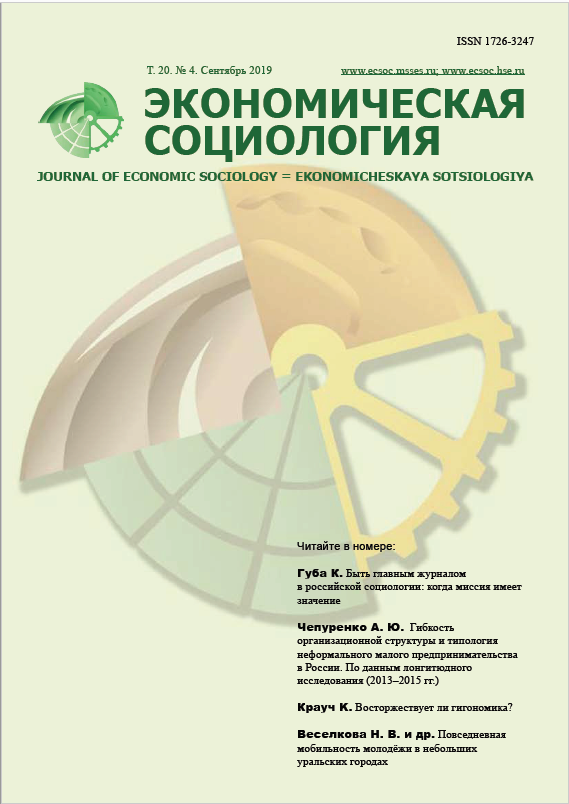Everyday Mobility of Youth in Small Ural Cities
Abstract
The article discusses practices with regard to the daily mobility of young people in the middle-sized Ural monotowns of Revda and Krasnoturyinsk. Both cities enter the orbits of the agglomerations, one of which is formed around Ekaterinburg, and the other in the north of the region. Similar in size, they are located close to (Revda) and far from (Krasnoturyinsk) the regional center. The population of Revda is growing, and that of Krasnoturyinsk, on the contrary, is decreasing. Practices with regard to the daily mobility of the population of these cities depend on the existing transport network, various deficits, and information resources. We are interested in two expressions of everyday transport mobility: internal and external. Mobility practices develop in trajectories and routes that become elements of urban spaces and fill the territory’s transport infrastructure, giving it social significance and a kind of “weight,” depending on who actualizes these trajectories and how often. The focus of the study is the experience of young citizens, because it is they who, firstly, broadcast the assessments of the transport situation in the city; secondly, they actively move around the city both with parents/relatives and with friends or alone; thirdly, it is the young people, especially after graduation, that create the flow of outgoing mobility. During 2018, 60 individual semiformalized interviews with experts and residents of the studied cities and 11 group discussions among high school students and college students (224 participants) using drawing techniques constituted the empirical basis of the study. The attractiveness for young people of such territories as Revda and Krasnoturinsk is largely based on the diversity of places and the ability to give existing ones new meanings. The results of the study show that the space of their town is considered to be mastered and well-known by young people, which increases interest in other, less familiar territories. The expansion of mobility opportunities in the format of agglomerations does not contribute to the intention of schoolchildren to return to their hometown after receiving a vocational education, which creates a problem in providing enterprises with highly qualified personnel. Thus, the development of the daily mobility of youths is not an opposition to territorial rootedness and affection, but creates new challenges for the development of a local, regional, and interregional labor market.













